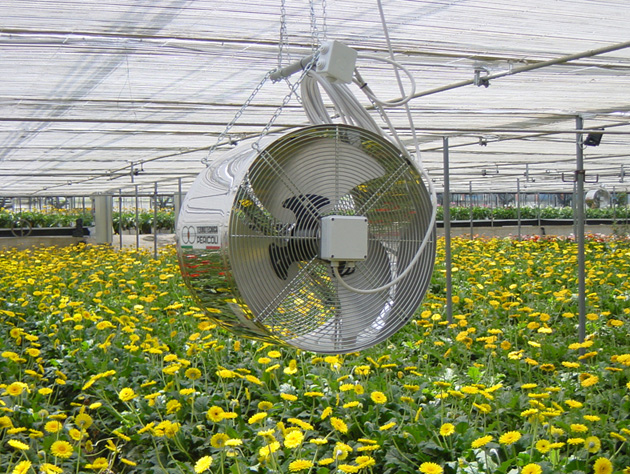Greenhouses are artificial environments in which it is essential that the factors involved in the crop’s development are adequate in order to achieve high yield and excellent quality of the final output.
The main factors we need to control are the following:
- Air conditioning
- Temperature
- Brightness
- Humidity
We already explained in the past about the importance of air circulation in hot climate zones, now we are going to analyze all the problems linked with humidity levels.
Relative humidity and dew point: what are they?
Humidity is the amount of water vapor in the air that accumulates due to evaporation and transpiration of plants.
Moisture levels – in English indicated with RH– are expressed as a percentage of relative humidity, which means the maximum amount of water vapor that air can contain at a certain temperature.
When the air reaches 100% of RH the water vapor condenses and turns into droplets. Water can also condense on surfaces cooler than the surrounding air at RH levels below 100%.
When the relative humidity rises, the air becomes closer to saturation, and the surface temperature that will cause condensation becomes warmer. This surface temperature is also called drop point.
The relationship between air temperature, relative humidity and dew point is fundamental because it allows the photosynthesis process and must be regulated depending on the plants inside the greenhouse in a delicate microclimate balance.
Problems related to high levels of humidity
All producers need to pay attention to try and reproduce the natural habitat conditions where crops normally grow in order to obtain maximum productivity from them.
What happens when humidity reach too high levels?
- Humidity management in greenhouses is a key issue in the eternal fight against the spread of pests.High levels of humidity facilitate the onset of fungal and molds diseases, whose spores spread very quickly as they find an ideal environment.
Among the worst, it is worth underlining the danger of Botrytis.Spots and browning of plants should never be underestimated because they can clearly be the first signal of the action of pathogens.
- Excessive humidity, then, also makes the evaporation more difficult: too much water can accumulate on the leaves and significantly reduce photosynthesis, especially if the drops are too big.
- The excessive accumulation of condensation on the walls and on the windows reduces the transparency of the greenhouse, which undermines the levels of brightness that, as anticipated at the beginning of this article, is among the key factors to obtain an optimal profit from production.
- The diffusion of fungi and mold damages the cleanliness of the greenhouse and favors the deterioration of the components creating, at the same time, an unhealthy environment for workers
The solution of Termotecnica Pericoli
When one of the problems listed above occurs, it is necessary to intervene as soon as possible to reduce the humidity inside the greenhouse, limit the damage and avoid the spread of parasites by using chemical agents.
Actually, a good maintenance and a constant control of the environment could be enough.
In summertime as well in winter when the heating system is running at full capacity, it is good practice to keep the air circulation on.
Some studies have shown that humidity levels above 90% favor the spread of diseases, but also the molding of leaves and the decomposition of fruits and stems.
By levels above 80%, tomatoes and their leaves are attacked by pathogens, but around 70% and below, the chances of infections and diseases are significantly reduced.
Fans installed inside the greenhouse ensure air recycling by removing excess moisture, making the environment drier and providing fresh, carbon dioxide-rich air where the air was stagnant.
ACF air circulation fan
The air circulation fan ACF is the ideal product to solve all the problems related to humidity levels in greenhouses.
Its main features:
– Small size, available in 18, 21 and 26 ”
– Made of materials that resist even in very aggressive environments
– Air outlet cone specifically designed to be able to cool plants gently without disturbing their heat shield
– Easy to install
– Low noise levels ensuring optimal working conditions for operators
– Bess lab certified.
It is no coincidence that ACF is one of our most appreciated products by our customers all over the world and is one of the bestsellers of 2017.
To know more
Find out more about Termotecnica Pericoli product dedicated to air circulation by clicking here
